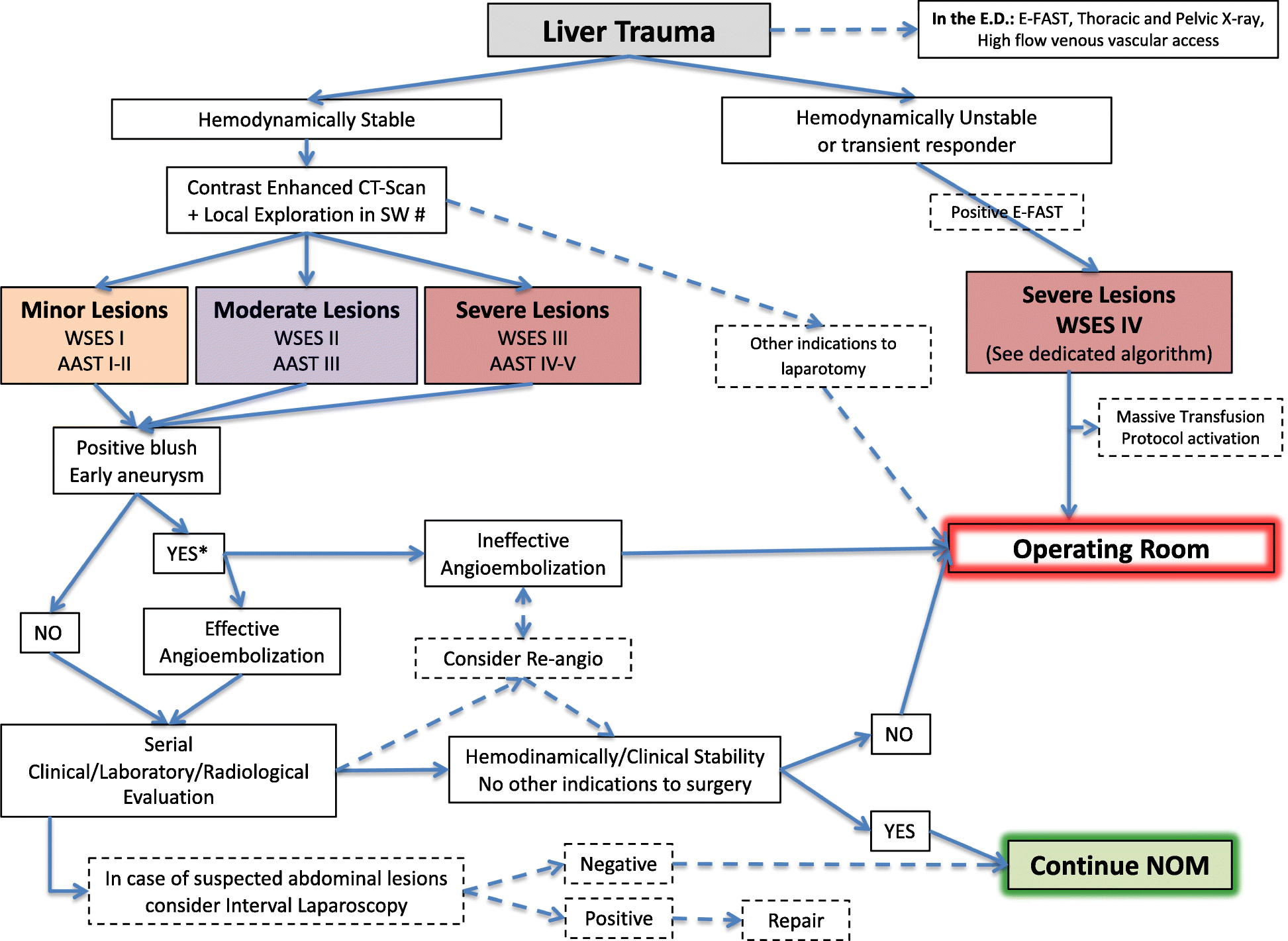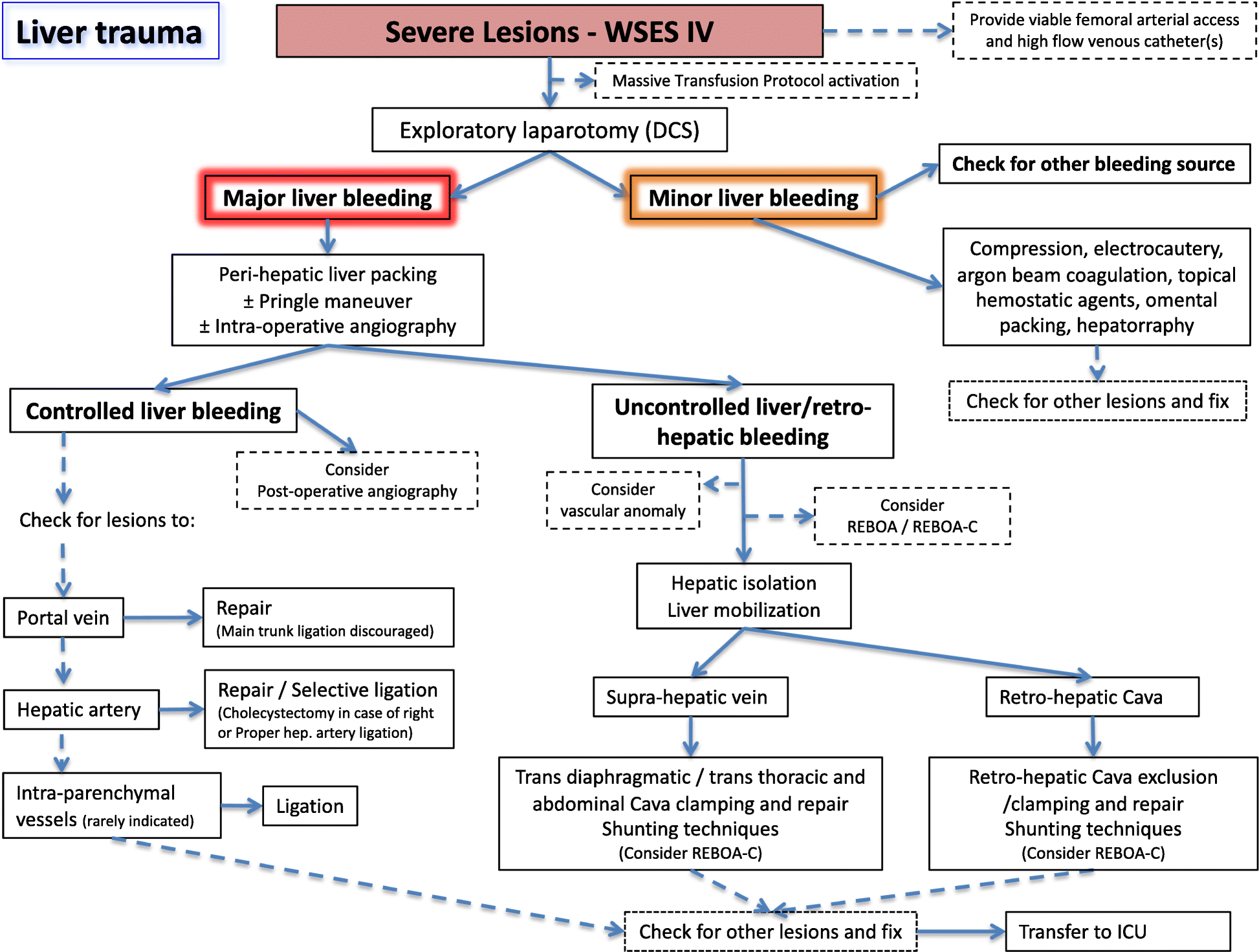Liver trauma is one of the most common abdominal injury in severely injured trauma patients.
Most common cause is blunt trauma abdomen.
Most of the patients can be treated with Non-operative Management (NOM).
The AAST (American Association for the Surgery of Trauma) liver injury scale
Classification
- grade I
- hematoma: subcapsular, <10% surface area
- laceration: capsular tear, <1 cm parenchymal depth
- grade II
- hematoma: subcapsular, 10-50% surface area
- hematoma: intraparenchymal <10 cm diameter
- laceration: capsular tear 1-3 cm parenchymal depth, <10 cm length
- grade III
- hematoma: subcapsular, >50% surface area of ruptured subcapsular or parenchymal hematoma
- hematoma: intraparenchymal >10 cm
- laceration: capsular tear >3 cm parenchymal depth
- vascular injury with active bleeding contained within liver parenchyma
- grade IV
- laceration: parenchymal disruption involving 25-75% hepatic lobe or involves 1-3 Couinaud segments
- vascular injury with active bleeding breaching the liver parenchyma into the peritoneum
- grade V
- laceration: parenchymal disruption involving >75% of hepatic lobe
- vascular: juxtahepatic venous injuries (retrohepatic vena cava / central major hepatic veins)
Additional points
- advance one grade for multiple injuries up to grade III
- “vascular injury” (i.e. pseudoaneurysm or AV fistula): appears as a focal collection of vascular contrast which decreases in attenuation on delayed images
- “active bleeding”: a focal or diffuse collection of vascular contrast which increases in size or attenuation on a delayed phase
The AAST guidelines recommend dual arterial/portal venous phase imaging to evaluate a vascular injury of the liver, spleen, or kidney.
Management
All hemodynamically unstable patients – should be taken immediately to the operation room.
All stable patients – evaluated with CECT abdomen ( Arterial and Porto-venous phase) consider for NOM or angioembolization.
Liver trauma management algorithm


References

Top site ,.. amazaing post ! Just keep the work on !